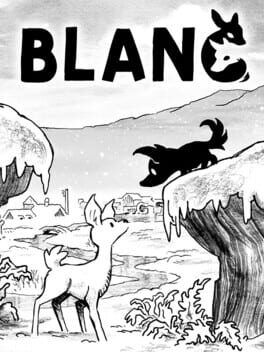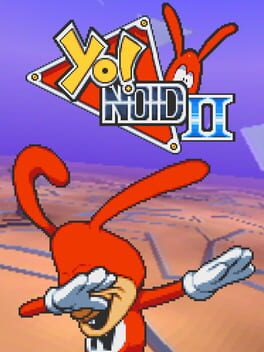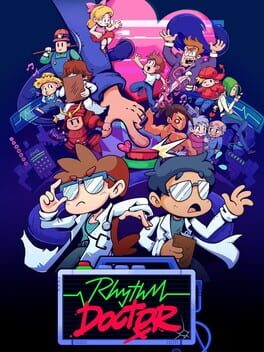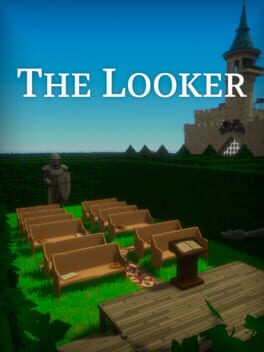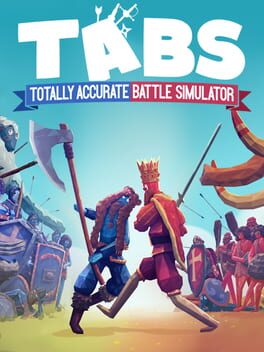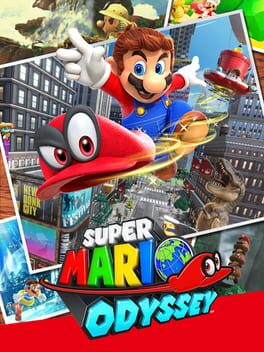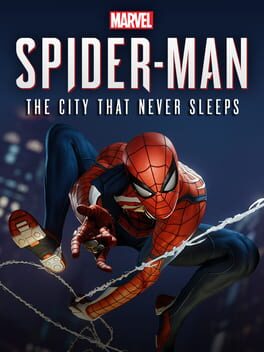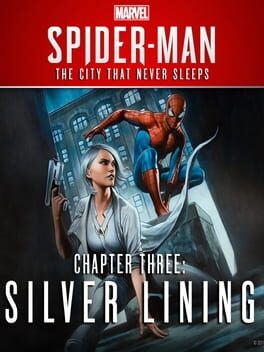ampiere
Really fun and creative! Not quite the crazy kaleidoscopic platforming I hoped for, but it's fun!
When I first saw the announcement for Wonder, I was admittedly a little skeptical. I've played just about every Super Mario Bros. 2D platform prior, but something about the gameplay footage didn't click with me. But I'm delighted to say that just after a few hours those worries dissipated. The game is full of fun platforming, clever twists, colorful visuals, and a catchy soundtrack. While that's all certainly praiseworthy, I think that's as far as it goes.
The platforming is... good. The Wonder flower mechanics are... good. The art direction is... good. Nothing really rose above the threshold of "wonder". The level design in particular didn't feel as tight as previous entries, and the final (final) level was less a test of skill and more a brute force grind. The game features co-op, but it's very much designed around a single player experience. It's also a shame that boss fights weren't more varied or lean into the craziness of it all.
Still, Wonder is a silly experience that will eventually put a smile on your face.
When I first saw the announcement for Wonder, I was admittedly a little skeptical. I've played just about every Super Mario Bros. 2D platform prior, but something about the gameplay footage didn't click with me. But I'm delighted to say that just after a few hours those worries dissipated. The game is full of fun platforming, clever twists, colorful visuals, and a catchy soundtrack. While that's all certainly praiseworthy, I think that's as far as it goes.
The platforming is... good. The Wonder flower mechanics are... good. The art direction is... good. Nothing really rose above the threshold of "wonder". The level design in particular didn't feel as tight as previous entries, and the final (final) level was less a test of skill and more a brute force grind. The game features co-op, but it's very much designed around a single player experience. It's also a shame that boss fights weren't more varied or lean into the craziness of it all.
Still, Wonder is a silly experience that will eventually put a smile on your face.
2022
This review contains spoilers
A delightful adventure with some Soulslike action, mellow tunes, and frustrating endgame secrets.
Everything about the game's aesthetic is just so damn good: from the Lifeformed soundtrack, to the saturated colors of the overworld, to the nostalgia of CRT TVs and player manuals. Piecing together disparate ends of the map felt so satisfying, especially when I realized I could've done it right from the start.
I think a fatal flaw of mine is to go for the secret ending first. In pursuit of the Golden Path, Tunic plays as an entirely different game. This second half of the game– endlessly scouring the environment and backtracking for secret puzzles a la The Witness– was a total drag. Even more disappointing was learning that the end result basically skips an otherwise fun and challenging boss fight.
Also, I found the game had an insane difficulty spike, right before obtaining the Hero's Laurels. Had I known about the difficulty settings, I would've definitely bumped it down a notch just to get through it.
Everything about the game's aesthetic is just so damn good: from the Lifeformed soundtrack, to the saturated colors of the overworld, to the nostalgia of CRT TVs and player manuals. Piecing together disparate ends of the map felt so satisfying, especially when I realized I could've done it right from the start.
I think a fatal flaw of mine is to go for the secret ending first. In pursuit of the Golden Path, Tunic plays as an entirely different game. This second half of the game– endlessly scouring the environment and backtracking for secret puzzles a la The Witness– was a total drag. Even more disappointing was learning that the end result basically skips an otherwise fun and challenging boss fight.
Also, I found the game had an insane difficulty spike, right before obtaining the Hero's Laurels. Had I known about the difficulty settings, I would've definitely bumped it down a notch just to get through it.
2023
2023
Less of a “puzzle” game and more of a “what-the-fuck-do-I-do” game.
Having powered through couch co-op classics like Portal 2 and It Takes Two, my partner and I might have had the bar set high. Even then, clunky controls, nauseating camera angles, and frustrating puzzles (if you can call some of them that) led to us nearly abandoning the game. The black and white art direction makes for cool screencaps, but more often it obfuscates where exactly the characters can go and what they can interact with. It’s a shame, since I don’t want to cast too much criticism on an otherwise cute premise.
Having powered through couch co-op classics like Portal 2 and It Takes Two, my partner and I might have had the bar set high. Even then, clunky controls, nauseating camera angles, and frustrating puzzles (if you can call some of them that) led to us nearly abandoning the game. The black and white art direction makes for cool screencaps, but more often it obfuscates where exactly the characters can go and what they can interact with. It’s a shame, since I don’t want to cast too much criticism on an otherwise cute premise.
2017
2021
2022
A totally mediocre battle simulator.
Starting out, TABS got a few good laughs out of me. Seeing ragdoll soldiers helplessly flail at each other until my improbable victory was a delightful way to spend an evening. Then I realized that within the first hour, TABS already played all its cards. There's nothing in the campaign that shakes up the formula to keep things interesting.
With a name like Totally Accurate Battle Simulator, my hope was that the game either heralded the most in-depth simulations of wartime, or (more likely) offered a silly, farcical, and self-aware parody. Instead, I was left with a middling experience that merely passed the time.
Starting out, TABS got a few good laughs out of me. Seeing ragdoll soldiers helplessly flail at each other until my improbable victory was a delightful way to spend an evening. Then I realized that within the first hour, TABS already played all its cards. There's nothing in the campaign that shakes up the formula to keep things interesting.
With a name like Totally Accurate Battle Simulator, my hope was that the game either heralded the most in-depth simulations of wartime, or (more likely) offered a silly, farcical, and self-aware parody. Instead, I was left with a middling experience that merely passed the time.
2019
I want to enjoy this game - I honestly do. But it's just not for me.
It's got some silly dialog options, unique mechanics for progressing the plot, and a genuine heartbeat beneath it all. I think the open-exploration mixed with the dense dialog isn't a winning combo for me, since my aimlessness usually gets me stuck in long conversations about nothing in particular.
I think about how I never enjoyed playing Dungeons & Dragons, and my ideal version of the RPG would resemble something like Disco Elysium. Yet, I'm afraid not even this kind of storytelling format is enough to keep my interest.
It's got some silly dialog options, unique mechanics for progressing the plot, and a genuine heartbeat beneath it all. I think the open-exploration mixed with the dense dialog isn't a winning combo for me, since my aimlessness usually gets me stuck in long conversations about nothing in particular.
I think about how I never enjoyed playing Dungeons & Dragons, and my ideal version of the RPG would resemble something like Disco Elysium. Yet, I'm afraid not even this kind of storytelling format is enough to keep my interest.
2023
2017
Still as fun as it was five years ago!
Maybe some of the whimsy is lost on replaying this, but it's still evident that Odyssey was made with a lot of care. Not all the moon locations are the most creative, but there's just so many of them to get hung up on just a few. I also totally forgot everything that happens in the ending sequence, so that was a lot of fun to experience again.
Maybe some of the whimsy is lost on replaying this, but it's still evident that Odyssey was made with a lot of care. Not all the moon locations are the most creative, but there's just so many of them to get hung up on just a few. I also totally forgot everything that happens in the ending sequence, so that was a lot of fun to experience again.
Short and sweet, Obra Dinn is a shining example of how style, setting, and storytelling can intersect and deliver a one-of-a-kind experience.
Peeling back the layers of this mystery was uniquely fun and addicting. The story itself is fairly simple, though the nonlinear approach and shifting perspectives was a clever enough twist to keep things engaging. The fact that the game automatically confirms three identification attempts at a time was a perfect way to keep things moving – even if that lends itself to cheesing the system by randomly guessing (look I'm a dumdum ok).
Peeling back the layers of this mystery was uniquely fun and addicting. The story itself is fairly simple, though the nonlinear approach and shifting perspectives was a clever enough twist to keep things engaging. The fact that the game automatically confirms three identification attempts at a time was a perfect way to keep things moving – even if that lends itself to cheesing the system by randomly guessing (look I'm a dumdum ok).
2019
This review contains spoilers
Persona 5 Royal is a dungeon-crawler-visual-novel-dating-sim monolith of a JRPG that oozes style and charm – and really, really, REALLY overstays its welcome. This might be the most conflicted I’ve felt reviewing a game. There’s so much to unpack here, and considering I sank so much time into P5R I think it’s worth the due diligence.
The rags-to-stealing-riches story is absolutely massive in scope. Woven into that story are dozens of unique characters, a handful of dungeons stuffed with loot, a multitude of monsters to collect, and several endings just to make sure your costs are sufficiently sunk. The main members of the Phantom Thieves are solidly written, with each member getting their own time to shine. By the time the whole gang was together, I could really feel that sense of camaraderie – that they really were thick as thieves.
The combat itself is largely straightforward, with features like Showtime, 1 More, and Baton Pass helping break the monotony of turn-based fights. But the game has a great way of raising the stakes, and each heist feels more dangerous than the last. Nothing feels quite as badass as securing a treasure route and putting some pesky adult back in their place.
Completing the story took me about 150 hours, and perhaps its story gives too much of a good thing. I found needless hurdles and filler put in front of me: conversations frequently circled the same points; Palace puzzles often employed a “run back to the other room and press the button” mechanic; and heist deadlines functioned less as a ticking clock and more as an excuse to wait around. Social links never quite carried the emotional weight of the main story, and toward the endgame I largely skipped over confidants' dialogs to keep things moving.
With the cadence of story beats getting off track by the seventh heist, tedium began to overshadow fun. I could imagine the credits rolling three times before they actually did. And to be blunt, I did not like anything concerning Maruki or Yoshizawa. The two characters seemed to be explicitly placed out of orbit for the bulk of the story, only to suddenly have center stage at the very end. The showdown with the God of Control was so insanely upstaging, leaving Maruki's Palace with a tough act to follow. His Palace was easily the nadir of my playthrough. The light bridge puzzle and mental health questionnaire tie for the most groan-inducing moments of P5R. Oh, and the game softlocked during the final battle.
I’ll emphasize again that this game’s presentation is wickedly stylish. Everything from the character designs, the music, the gameplay, and even the freakin’ menu system is imbued with a too-cool-for-school attitude. The P5 soundtrack has dominated my music rotation (though Royal tracks don't have the same luster). One last nitpick: I found the inconsistent animation styles between scenes a little stilting: some scenes were just text bubbles, some voice-acted, some in-game cutscenes, and some taken straight from the anime.
What started as having my own heart stolen by P5R's infectious charm ultimately turned into a royal pain in the ass.
still, walking to Iwai's store got me groovin fr
The rags-to-stealing-riches story is absolutely massive in scope. Woven into that story are dozens of unique characters, a handful of dungeons stuffed with loot, a multitude of monsters to collect, and several endings just to make sure your costs are sufficiently sunk. The main members of the Phantom Thieves are solidly written, with each member getting their own time to shine. By the time the whole gang was together, I could really feel that sense of camaraderie – that they really were thick as thieves.
The combat itself is largely straightforward, with features like Showtime, 1 More, and Baton Pass helping break the monotony of turn-based fights. But the game has a great way of raising the stakes, and each heist feels more dangerous than the last. Nothing feels quite as badass as securing a treasure route and putting some pesky adult back in their place.
Completing the story took me about 150 hours, and perhaps its story gives too much of a good thing. I found needless hurdles and filler put in front of me: conversations frequently circled the same points; Palace puzzles often employed a “run back to the other room and press the button” mechanic; and heist deadlines functioned less as a ticking clock and more as an excuse to wait around. Social links never quite carried the emotional weight of the main story, and toward the endgame I largely skipped over confidants' dialogs to keep things moving.
With the cadence of story beats getting off track by the seventh heist, tedium began to overshadow fun. I could imagine the credits rolling three times before they actually did. And to be blunt, I did not like anything concerning Maruki or Yoshizawa. The two characters seemed to be explicitly placed out of orbit for the bulk of the story, only to suddenly have center stage at the very end. The showdown with the God of Control was so insanely upstaging, leaving Maruki's Palace with a tough act to follow. His Palace was easily the nadir of my playthrough. The light bridge puzzle and mental health questionnaire tie for the most groan-inducing moments of P5R. Oh, and the game softlocked during the final battle.
I’ll emphasize again that this game’s presentation is wickedly stylish. Everything from the character designs, the music, the gameplay, and even the freakin’ menu system is imbued with a too-cool-for-school attitude. The P5 soundtrack has dominated my music rotation (though Royal tracks don't have the same luster). One last nitpick: I found the inconsistent animation styles between scenes a little stilting: some scenes were just text bubbles, some voice-acted, some in-game cutscenes, and some taken straight from the anime.
What started as having my own heart stolen by P5R's infectious charm ultimately turned into a royal pain in the ass.
still, walking to Iwai's store got me groovin fr
A continuation of the base game that feels much less ambitious and more tedious than the main campaign.
For a story with rivaling gangs as its crux, it's surprisingly bloodless. This anemic presentation also serves as a good metaphor of the rest of the DLC's content, which is bursting at the seams with repetitive missions and uninteresting plot lines. While my individual reviews go more in-depth, I'd still like to emphasize just how badly the central conflict with Hammerhead is fumbled. There's very little driving his antagonism other than "Hammerhead is bad" and "Spider-Man is in his way." I also really couldn't get over how off-putting mafia thugs in mech suits were. The visual style ended up being a bland homogenized mess.
Combat from the base game was generally good and left unchanged in the DLC, but the excessive and unvaried missions stretched a good thing to its breaking point. Getting 100% completion was painfully devoid of fun.
And while all that might sound scathing, this DLC did have some bursts of fun. And besides, it at least sets the stage for more good things to come.
For a story with rivaling gangs as its crux, it's surprisingly bloodless. This anemic presentation also serves as a good metaphor of the rest of the DLC's content, which is bursting at the seams with repetitive missions and uninteresting plot lines. While my individual reviews go more in-depth, I'd still like to emphasize just how badly the central conflict with Hammerhead is fumbled. There's very little driving his antagonism other than "Hammerhead is bad" and "Spider-Man is in his way." I also really couldn't get over how off-putting mafia thugs in mech suits were. The visual style ended up being a bland homogenized mess.
Combat from the base game was generally good and left unchanged in the DLC, but the excessive and unvaried missions stretched a good thing to its breaking point. Getting 100% completion was painfully devoid of fun.
And while all that might sound scathing, this DLC did have some bursts of fun. And besides, it at least sets the stage for more good things to come.
The final chapter fumbles the landing of a largely risk-averse stunt.
With Chapter 3 focusing on Silver Sable, the plot here has a foundation to build upon this time. It's not great, but it's better than Black Cat's story in Chapter 1 or Hammerhead's introduction in Chapter 2. There's a clear motive for Sable, there's a bite-sized character arc for her, and Spider-Man feels right to tag along for the ride.
That said, there's hardly anything I found interesting with Hammerhead. His final showdown didn't pack the same robotically-enhanced punch as fights in the base game, largely because Spider-Man and Hammerhead mean very little to each other. By the end of this chapter I grew completely disinterested in the mechanized mafia theming. In the heat of fast-moving turf battles, enemies blur together as grey and white geometric blobs. And speaking of combat, I actively avoided what I could to streamline my time with this DLC. That's usually not a good sign.
Yuri's true motives are revealed here, albeit with the fanfare of an eyebrow raise and a shrug. While Yuri's typically been relegated to off-screen support, her side story also unfolding in the background feels lazy. Other minor story beats are thrown in to wrap up loose ends and set up future games – all with varying degrees of success.
With Chapter 3 focusing on Silver Sable, the plot here has a foundation to build upon this time. It's not great, but it's better than Black Cat's story in Chapter 1 or Hammerhead's introduction in Chapter 2. There's a clear motive for Sable, there's a bite-sized character arc for her, and Spider-Man feels right to tag along for the ride.
That said, there's hardly anything I found interesting with Hammerhead. His final showdown didn't pack the same robotically-enhanced punch as fights in the base game, largely because Spider-Man and Hammerhead mean very little to each other. By the end of this chapter I grew completely disinterested in the mechanized mafia theming. In the heat of fast-moving turf battles, enemies blur together as grey and white geometric blobs. And speaking of combat, I actively avoided what I could to streamline my time with this DLC. That's usually not a good sign.
Yuri's true motives are revealed here, albeit with the fanfare of an eyebrow raise and a shrug. While Yuri's typically been relegated to off-screen support, her side story also unfolding in the background feels lazy. Other minor story beats are thrown in to wrap up loose ends and set up future games – all with varying degrees of success.



